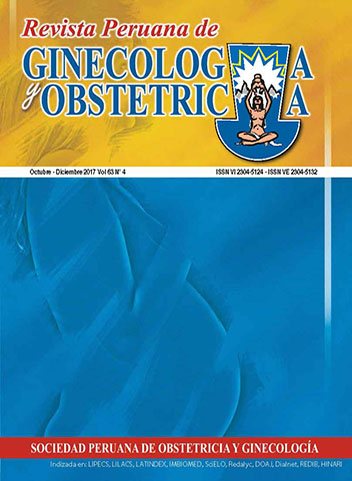Prevalence of overweight and obesity in Perú
DOI:
https://doi.org/10.31403/rpgo.v63i2034Abstract
Peru is a medium income developing country with an increasing prevalence of chronic non communicable diseases, including cardiovascular disease, cancer, diabetes mellitus, metabolic syndrome and obesity. Objective: To review the epidemiology of obesity and the metabolic syndrome (MS) concerning its prevalence. Methods: The medical literature was reviewed based on the systematic searching of Pub-Med, SciELO, LILACS and publications from the Peruvian Ministry of Health, the World Health Organization and national public health related agencies. Results: The National Household Survey (ENAHO) 2006 found prevalence of overweight of 30.9% in young adults, 42.5% in adults and 21.7% in older adults. The prevalence of obesity in these groups was 8.7%, 19.8% and 10.6%, respectively. Being woman, not being poor and living in urban area were the main factors associated to weight excess. Prevalence of overweight in children < 5 years old was 6.4%, in those between 5 to 9 years old 15.5%, and in adolescents (10-19 years old) 11.0%. Prevalence of obesity in these groups was 1.8%, 8.9% y 3.3%, respectively. Not being poor, living in an urban area and primary school education level were the main factors associated to weight excess. The National Health Survey (ENDES) 2014, in people ≥ 15 years old found an overweight prevalence of 33.8%, greater in Lima (35.7%) and in the coast (36.7%) than in the jungle (33.4%) and the Andean region (29.8%). The prevalence of obesity was 18.3%, greater in urban areas (21.5 %) than in rural ones (8.9%). In the follow up of this survey through 2015-2016, it was observed that the mean BMI of this population and the prevalence of obesity and overweight remained constant. Prevalence of MS (ATP III) varies between 10% a 45%. It is more prevalent in women, older adults and in those living in urban areas and at low altitudes. Conclusions: Obesity is a major health care issue in Peru that exposes difficult challenges to the Health System due to the morbidity resulting from this condition, such as diabetes mellitus, arterial hypertension, metabolic syndrome, polycystic ovaries, among others. The national strategy for tackling obesity should include promotion in the community of healthy lifestyles through the mass media and social networks, the appropriate diagnosis of this morbid condition particularly among primary health providers, and the capability of prescribing the adoption of healthy life habits, and referring the most severe cases to specialized medical centers.Downloads
Download data is not yet available.
Downloads
Published
2018-01-28
How to Cite
Villena Chávez, J. E. (2018). Prevalence of overweight and obesity in Perú. The Peruvian Journal of Gynecology and Obstetrics, 63(4), 593–598. https://doi.org/10.31403/rpgo.v63i2034
Issue
Section
Simposio - Obesidad en la Mujer
















